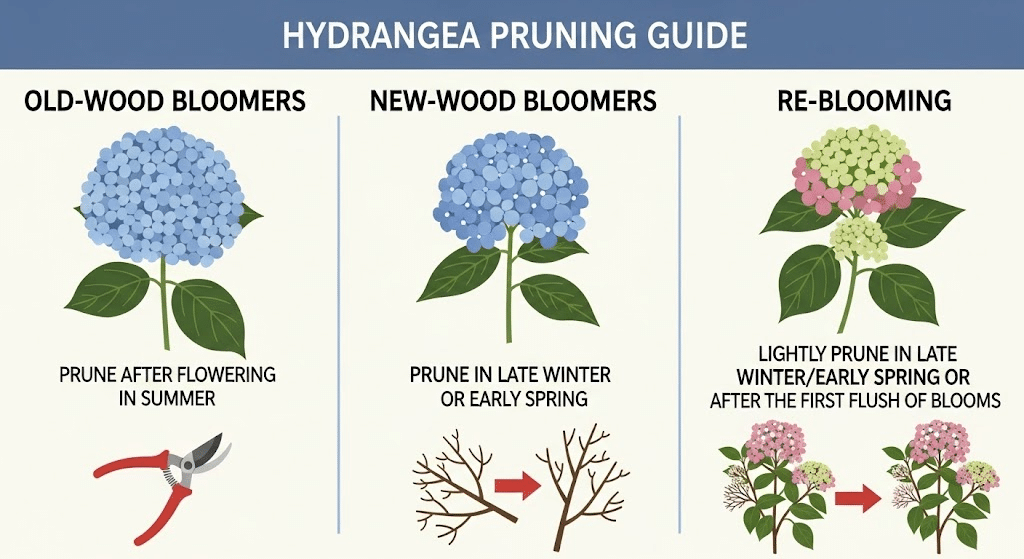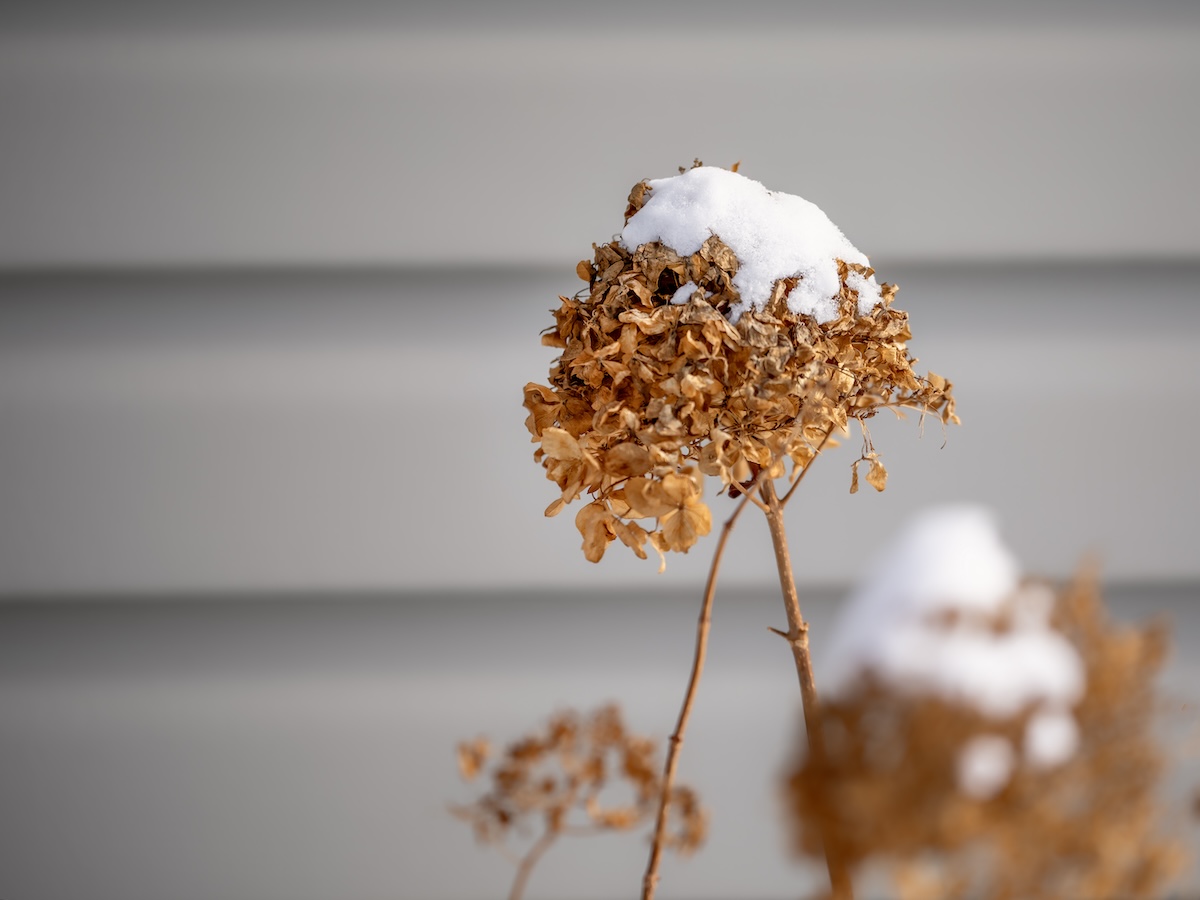Why Preparing Hydrangeas for a Canadian Winter Matters
If you’ve ever planted hydrangeas in your garden, you already know the joy they bring: massive blooms, vibrant colors, and an elegance that elevates any outdoor space. But here’s the tough truth, many gardeners in Canada lose their hydrangeas to winter damage every single year.
That’s because Canadian winters aren’t gentle. Freezing temperatures, strong winds, and frost heave can wreak havoc on hydrangeas, leaving them weak or flowerless in spring. If you don’t prepare hydrangeas for a Canadian winter properly, all those buds you dreamed of enjoying next year may never bloom.
As someone who has been landscaping and gardening in Vancouver for more than 25 years, I’ve seen this happen far too often. But with the right preparation, your hydrangeas can not only survive the Canadian winter—they can thrive.
This detailed guide will walk you through everything you need to know, step by step, to protect your hydrangeas and enjoy their full beauty year after year.

Step 1: Identify Your Hydrangea Type Before Winter Preparation
The first mistake gardeners make is treating all hydrangeas the same. To prepare hydrangeas for a Canadian winter correctly, you need to know what type you’re working with.
-
Bigleaf Hydrangeas (Hydrangea macrophylla): These bloom on old wood. That means next year’s flower buds are already set on the stems by late summer. If you prune in fall, you cut off next year’s blooms. These need the most protection in winter.
-
Panicle Hydrangeas (Hydrangea paniculata): These bloom on new wood. They are hardy, forgiving, and more tolerant of cold Canadian winters.
-
Smooth Hydrangeas (Hydrangea arborescens): Similar to panicle, they bloom on new wood and handle winter stress better.
-
Oakleaf Hydrangeas (Hydrangea quercifolia): Less common in Canada but very cold-sensitive, needing heavy mulching and insulation.
👉 If you aren’t sure which type you have, bring a photo into DH Garden Centre, 3742 West 10th Avenue, Vancouver, and our team will help you identify it. Knowing your hydrangea type is the foundation of proper winter care.

Step 2: Stop Fertilizing Hydrangeas in Late Summer
To prepare hydrangeas for a Canadian winter, timing is everything. One of the biggest mistakes gardeners make is continuing to fertilize too late in the season.
Fertilizer promotes tender new growth, but new stems and leaves don’t have enough time to harden before frost arrives. These soft tissues almost always die back, draining the plant’s energy.
What to do instead:
-
Stop fertilizing by the end of August in most parts of Canada.
-
Let your hydrangeas naturally slow their growth and prepare for dormancy.
-
Focus on providing deep, consistent watering until the ground freezes.
This simple adjustment helps your plant conserve energy for root and bud protection during winter.
Step 3: Don’t Rush to Prune—Timing Matters
Another critical step when you prepare hydrangeas for a Canadian winter is knowing when not to prune.
-
Do not prune bigleaf hydrangeas in fall. Their buds for next year are already formed on old stems. Cutting now means no flowers next summer.
-
Panicle and smooth hydrangeas can be pruned in late winter or early spring because they bloom on new growth.
Instead of pruning in autumn, simply remove dead or damaged stems. Leave the rest intact—they serve as natural insulation and protect the plant’s structure.

Step 4: Mulch Heavily to Protect Roots from Frost
Mulching is one of the most effective ways to prepare hydrangeas for a Canadian winter. Think of mulch as a warm blanket for your plant’s roots.
Here’s how I do it in my own landscaping projects:
-
Apply a 6–8 inch layer of shredded leaves, compost, pine needles, or bark mulch around the base of the plant.
-
Extend the mulch layer about 12–18 inches from the crown to cover the entire root zone.
-
Avoid piling mulch directly against stems—leave a small gap to prevent rot.
Mulching not only insulates against freezing but also helps prevent frost heave, a common Canadian winter problem where soil expansion pushes plants out of the ground.
Step 5: Protect Buds from Harsh Winter Winds
Roots aren’t the only part of hydrangeas that need protection. The flower buds—especially on bigleaf hydrangeas—must be shielded if you want blooms in spring.
Here’s a proven method to prepare hydrangeas for a Canadian winter:
-
Wait until leaves have dropped in late fall.
-
Gently tie stems together with twine to prevent breakage under heavy snow.
-
Build a cage around the plant using wooden stakes or chicken wire.
-
Wrap the cage with burlap or frost cloth, leaving space for airflow.
-
Fill the cage with dry leaves or straw for added insulation.
It may look unusual in your winter garden, but come June, you’ll be glad you took the time.

Step 6: Water Deeply Before the Ground Freezes
Hydrangeas, like many shrubs, overwinter better when their roots are well hydrated. Dry soil increases the risk of root damage from freezing.
Before the first hard frost:
-
Give your hydrangeas a deep soak.
-
Make sure the water reaches down into the root zone.
-
After that, stop watering until spring thaw.
This single step often makes the difference between a hydrangea that struggles and one that comes back strong.
Step 7: Patience in Spring Don’t Cut Too Soon
One of the hardest lessons for new gardeners is patience. In early spring, hydrangeas often look dead. The temptation is to cut them back aggressively.
But hydrangeas, especially bigleaf varieties, leaf out late. Sometimes they don’t show signs of life until late May in Canada. Cutting too early may remove live wood and buds.
👉 Tip: Scratch the bark with your fingernail. If you see green underneath, the stem is alive.
Real-Life Story: Saving a Client’s Hydrangeas in Vancouver
A few years back, I had a client in West Vancouver who was ready to rip out her hydrangeas. “They never bloom,” she told me.
We followed the exact steps I’ve shared with you—mulched deeply, built a winter cage, and resisted fall pruning. By July the next year, her garden was glowing with blue blossoms. She told me it felt like she had brought her plants back from the dead.
That’s the beauty of preparing hydrangeas for a Canadian winter—it’s not just about survival, it’s about unlocking their full potential.
Common Mistakes When Preparing Hydrangeas for Canadian Winter
Even experienced gardeners slip up. Here are the most frequent mistakes I’ve seen:
-
Pruning too early: Cutting old-wood hydrangeas in fall means no blooms next summer.
-
Skipping mulch: Without insulation, roots are vulnerable to frost heave.
-
Using plastic covers: Plastic traps moisture and suffocates buds. Burlap or frost cloth is better.
-
Forgetting deep watering: Dry roots are more likely to die in winter freeze.
-
Giving up too soon in spring: Hydrangeas leaf out late—patience pays.
Final Thoughts
To prepare hydrangeas for a Canadian winter is to give your garden a gift. It takes planning, patience, and a little extra effort—but the payoff is breathtaking blooms when summer returns.
Hydrangeas are resilient, but they can’t do it all on their own. Protect them now, and they’ll thank you with flowers that light up your garden year after year.
👉 Ready to protect your hydrangeas before the cold sets in? Visit DH Garden Centre, 3742 West 10th Avenue, Vancouver, BC V6R 2G4. We carry mulch, compost, burlap, and everything else you need to prepare hydrangeas for a Canadian winter.
Come see us or call 604-929-7335—let’s make sure your garden wakes up in spring full of life and color.
FAQs About Preparing Hydrangeas for Canadian Winter
1. Should I cut back hydrangeas before winter in Canada?
It depends on the type. Bigleaf hydrangeas should not be cut back in fall, while panicle and smooth hydrangeas can be pruned in late winter or spring.
2. Do hydrangeas survive Canadian winters without protection?
Some types, like panicle hydrangeas, are hardier. But bigleaf hydrangeas often need mulching and bud protection to bloom the next year.
3. What is the best mulch for hydrangeas in Canada?
Shredded leaves, compost, pine needles, and bark mulch all work well. Avoid heavy, compacted materials.
4. Can I cover hydrangeas with plastic in winter?
No. Plastic traps moisture and can suffocate the plant. Use burlap or frost cloth instead.
5. How late can I prepare hydrangeas for winter in Canada?
Start preparations in late fall—before the first hard frost. Waiting too long can risk damage to buds and roots.


